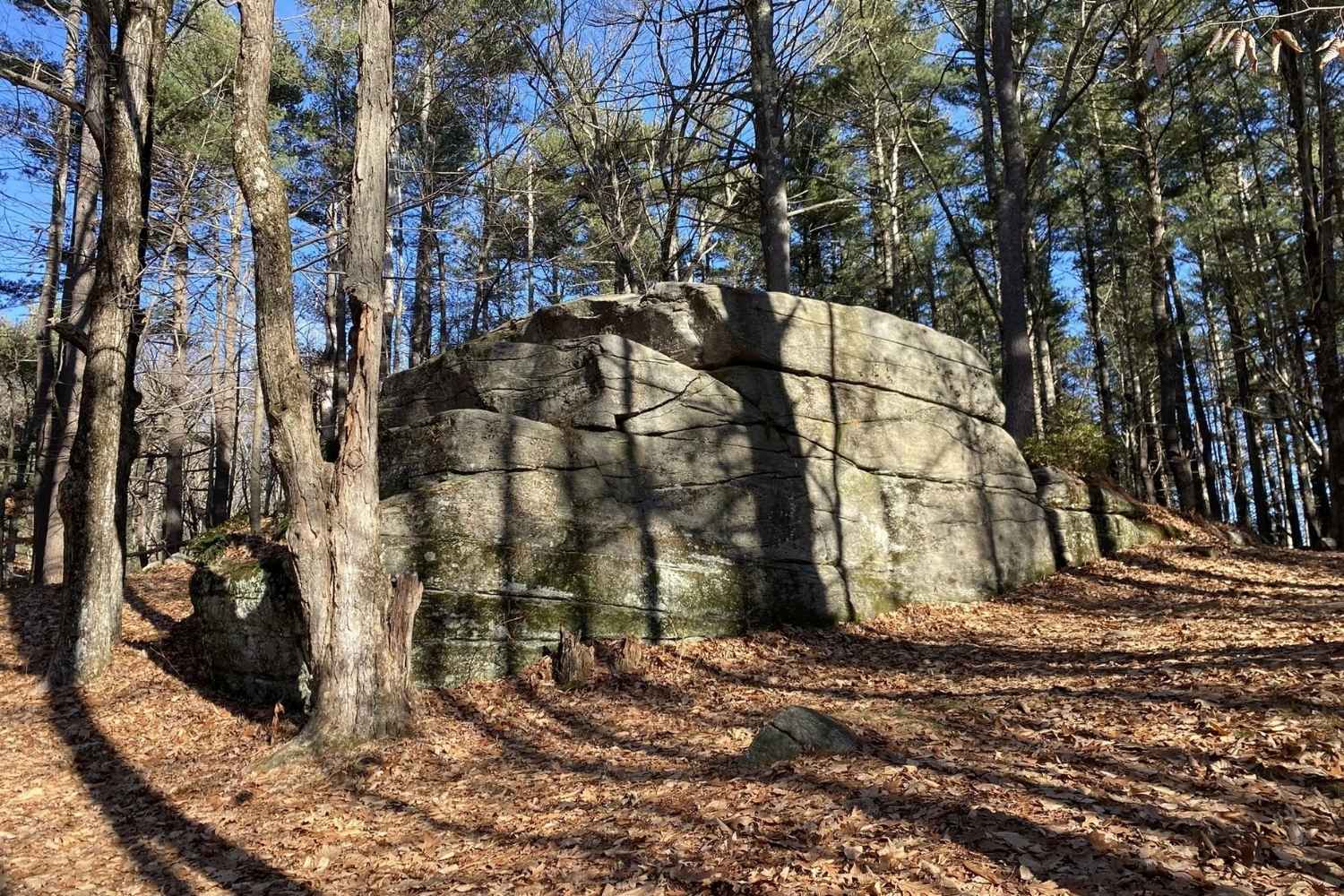Secrets Of Massachusetts’s Ancient Stone Cairns

Have you ever wondered about the ancient stone cairns scattered across Massachusetts? These mysterious structures, often hidden in forests or perched on hills, have puzzled historians and archaeologists for years. Some believe they were built by Native American tribes for ceremonial purposes, while others think they might be colonial boundary markers. Either way, these stone piles offer a fascinating glimpse into the past. Visiting these sites can feel like stepping back in time, connecting you with the land's rich history. Whether you're a history buff or just love a good mystery, exploring these cairns can be a rewarding adventure.
Discovering Massachusetts's Ancient Stone Cairns
Massachusetts, known for its rich history and scenic landscapes, hides a lesser-known treasure: ancient stone cairns. These mysterious rock piles, scattered across the state, have puzzled historians and archaeologists for years. Some believe they were built by Native Americans, while others think they might have been created by early European settlers. Let's explore some of the most intriguing stone cairns in Massachusetts.
1. Upton Chamber
The Upton Chamber, located in Upton, is one of the largest and most well-preserved stone chambers in New England. This underground structure, made of large stone slabs, has a beehive shape and a narrow entrance. Some theories suggest it was used for ceremonial purposes or as a storage space.
2. America's Stonehenge
Situated in Salem, New Hampshire, just over the Massachusetts border, America's Stonehenge is a complex of stone structures and astronomical alignments. Though not technically in Massachusetts, its proximity makes it a must-visit. The site includes stone chambers, walls, and cairns, and some believe it was used for ancient rituals.
3. Balance Rock State Park
In Lanesborough, Balance Rock State Park features a massive boulder precariously balanced on a smaller rock. While not a cairn in the traditional sense, this natural wonder has inspired many legends and is surrounded by smaller stone piles that may have been placed by early inhabitants.
4. Dogtown Common
Dogtown Common, located in Gloucester, is an abandoned colonial settlement now known for its eerie atmosphere and mysterious stone structures. Among the ruins, visitors can find numerous stone cairns and other rock formations, believed to have been created by both Native Americans and early settlers.
5. The Dighton Rock
The Dighton Rock, found in Berkley, is a 40-ton boulder covered in petroglyphs. While not a cairn, the rock's carvings have sparked much debate about their origins. Some think they were made by Native Americans, while others suggest Norse or Portuguese explorers.
6. The Goshen Stone Cairns
In the small town of Goshen, several stone cairns can be found scattered throughout the woods. These cairns, often hidden among the trees, are thought to have been built by Native Americans for ceremonial or navigational purposes.
7. The Hawley Bog Cairns
Hawley Bog, located in the town of Hawley, is home to several ancient stone cairns. These cairns, surrounded by the lush greenery of the bog, are believed to have been used by Native Americans for various purposes, including marking territory or burial sites.
8. The Lynn Woods Reservation
Lynn Woods Reservation, a large urban park in Lynn, contains numerous stone cairns and other rock formations. These structures, scattered throughout the park, are thought to have been built by early settlers or Native Americans for various reasons, such as marking trails or ceremonial sites.
9. The Mystery Hill Cairns
Mystery Hill, also known as America's Stonehenge, is located in North Salem, New Hampshire, close to the Massachusetts border. This site features a series of stone cairns, chambers, and walls that have puzzled researchers for years. Some believe the site was used for ancient astronomical observations or rituals.
10. The Shutesbury Cairns
In the town of Shutesbury, several stone cairns can be found in the woods. These cairns, often hidden among the trees, are thought to have been built by Native Americans for ceremonial or navigational purposes. The Shutesbury Cairns offer a glimpse into the region's ancient past.
11. The Upton Stone Chamber
The Upton Stone Chamber, located in Upton, is another fascinating stone structure. This underground chamber, made of large stone slabs, has a beehive shape and a narrow entrance. Some theories suggest it was used for ceremonial purposes or as a storage space.
12. The Wendell State Forest Cairns
Wendell State Forest, located in the town of Wendell, is home to several ancient stone cairns. These cairns, surrounded by the lush greenery of the forest, are believed to have been used by Native Americans for various purposes, including marking territory or burial sites.
13. The Westford Knight
The Westford Knight, found in Westford, is a carving on a rock that some believe depicts a medieval knight. While not a cairn, this mysterious carving has sparked much debate about its origins. Some think it was made by Native Americans, while others suggest it was created by early European explorers.
The Timeless Allure of Massachusetts's Stone Cairns
Massachusetts's ancient stone cairns hold a special place in history. These mysterious structures, scattered across the state, offer a glimpse into the past. They serve as a reminder of the people who once walked these lands. Whether built for spiritual reasons, navigation, or marking territories, each cairn tells a unique story.
Visiting these sites can be a fascinating experience. It allows you to connect with history in a tangible way. The stone cairns are not just piles of rocks; they are symbols of human ingenuity and cultural significance. Exploring them can spark curiosity and wonder about the lives of those who built them.
Next time you're in Massachusetts, take some time to visit these ancient structures. You'll gain a deeper appreciation for the state's rich history and the enduring legacy of its early inhabitants.

